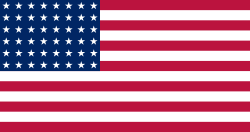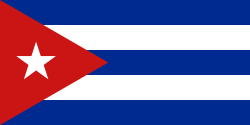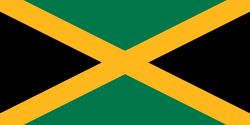Roger Kingdom

Roger Kingdom (* 26. August 1962 in Vienna, Georgia) ist ein ehemaliger US-amerikanischer Leichtathlet. Er war zweimal Olympiasieger.
Kingdom war einer der stärksten 110-Meter-Hürdensprinter der 1980er und 1990er Jahre. In seiner langen Karriere auf Weltklasseniveau gewann er zwei olympische Goldmedaillen 1984 in Los Angeles und 1988 in Seoul. 1989 wurde er in Budapest Hallenweltmeister über 60 Meter Hürden. Beim Grand Prix-Meeting stellte er in Zürich einen Weltrekord mit 12,92 s auf, der 1993 von Colin Jackson bei den Weltmeisterschaften in Stuttgart auf 12,91 s verbessert wurde. Am Ende der Saison wurde Kingdom als Welt-Leichtathlet des Jahres 1989 ausgezeichnet.[1] 1992 konnte er sich nicht für die Olympischen Spiele qualifizieren. Drei Jahre später jedoch gewann er erstmals bei Freiluftweltmeisterschaften eine Medaille, Bronze bei den Weltmeisterschaften 1995 in Göteborg.
Bei einer Größe von 1,85 m betrug Kingdoms Wettkampfgewicht 91 kg.[2]
Nachdem er von 2014 bis 2017 bei den Arizona Cardinals als Assistenz Coach für die Kraft und Ausdauer zuständig war, wechselte er 2019 zu den Tampa Bay Buccaneers, wo er, wie schon zuvor bei den Cardinals, wieder unter Bruce Arians arbeitete.[3]
Weblinks
- Athletenporträt von Roger Kingdom ( vom 11. Februar 2013 im Webarchiv archive.today) bei der IAAF (englisch)
- Roger Kingdom in der Datenbank von Olympedia.org (englisch)
Einzelnachweise
- ↑ Usain Bolt zum vierten Mal Welt-Leichtathlet, www.leichtathletik.de 24. November 2012
- ↑ Athletenprofil der IAAF
- ↑ Tampa Bay Buccaneers (Hrsg.): 2020 Tampa Bay Buccaneers Media Guide. 2020, S. 29 (englisch, nfl.com [PDF]).
| Personendaten | |
|---|---|
| NAME | Kingdom, Roger |
| KURZBESCHREIBUNG | US-amerikanischer Leichtathlet |
| GEBURTSDATUM | 26. August 1962 |
| GEBURTSORT | Vienna, Georgia, USA |
Auf dieser Seite verwendete Medien
Olympic Rings without "rims" (gaps between the rings), As used, eg. in the logos of the 2008 and 2016 Olympics. The colour scheme applied here was specified in 2023 guidelines.
US Flag with 44 stars. In use 4 July 1891–3 July 1896. Created by jacobolus using Adobe Illustrator, and released into the public domain.
US Flag with 44 stars. In use 4 July 1891–3 July 1896. Created by jacobolus using Adobe Illustrator, and released into the public domain.
US Flag with 45 stars. In use 4 July 1896–3 July 1908. Created by jacobolus using Adobe Illustrator, and released into the public domain. This flag was used during the Spanish-American War.
US Flag with 45 stars. In use 4 July 1896–3 July 1908. Created by jacobolus using Adobe Illustrator, and released into the public domain. This flag was used during the Spanish-American War.
US Flag with 46 stars. In use 4 July 1908–3 July 1912. Created by jacobolus using Adobe Illustrator, and released into the public domain.
Other version: Image:US 46 Star Flag.svgUS Flag with 46 stars. In use 4 July 1908–3 July 1912. Created by jacobolus using Adobe Illustrator, and released into the public domain.
Other version: Image:US 46 Star Flag.svgUS Flag with 48 stars. In use for 47 years from July 4, 1912, to July 3, 1959.
The Canadian Red Ensign used between 1921 and 1957.
This image has compared for accuracy (mainly colors) using an image from World Statesmen. The only change is making the maple leaves green from red. This image has compared for accuracy (mainly colors) using an image from World Statesmen. The most recent version of this image has changed the harp into one with a female figure; see [http://flagspot.net/flags/ca-1921.html FOTW
The Canadian Red Ensign used between 1921 and 1957.
This image has compared for accuracy (mainly colors) using an image from World Statesmen. The only change is making the maple leaves green from red. This image has compared for accuracy (mainly colors) using an image from World Statesmen. The most recent version of this image has changed the harp into one with a female figure; see [http://flagspot.net/flags/ca-1921.html FOTW
Die Staatsflagge der Deutschen Demokratischen Republik, vom 1. Oktober 1959 bis 3. Oktober 1990
Flag of Canada introduced in 1965, using Pantone colors. This design replaced the Canadian Red Ensign design.
Autor/Urheber: Stephen V. Russell, Lizenz: CC BY-SA 4.0
Roger Kingdom















